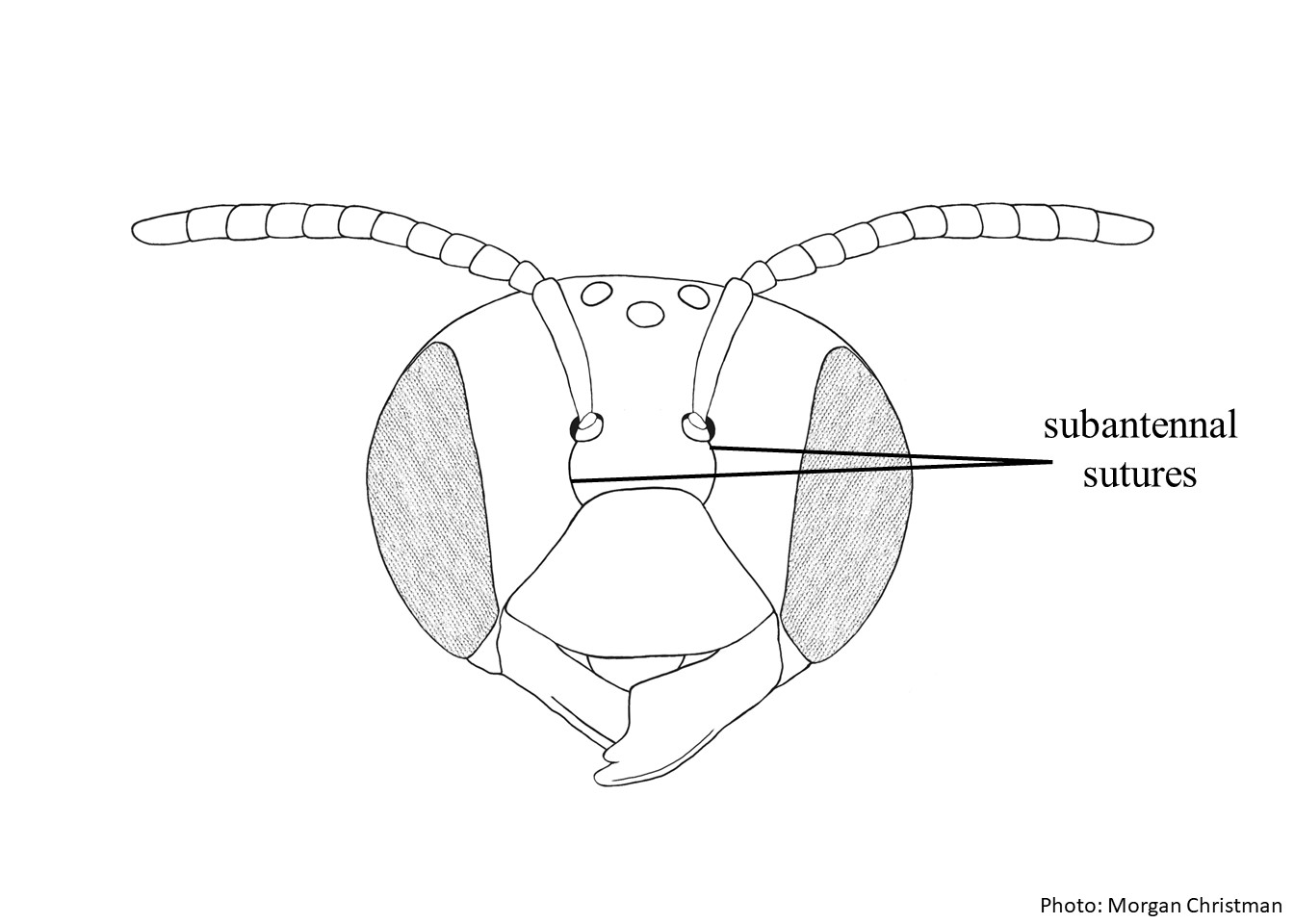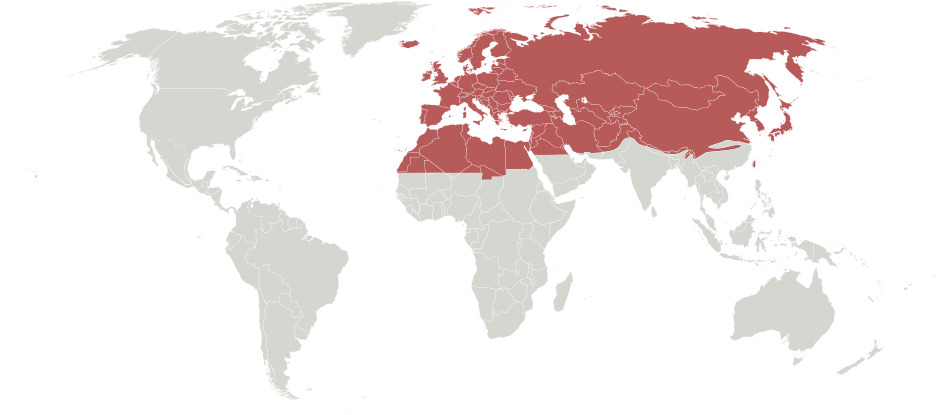Taxonomy
Family: Megachilidae
Subfamily: Megachilinae
Tribe: Anthidiini
Genus: Afranthidium Michener, 1948
Subgenera: Afranthidium sensu stricto
, Capanthidium, Domanthidium, Mesanthidium, Nigranthidium, Oranthidium, Xenanthidium
Common name: African carder bee
Overview
Family: Megachilidae
Subfamily: Megachilinae
Tribe: Anthidiini
Genus: Afranthidium Michener, 1948
Subgenera: Afranthidium sensu stricto
, Capanthidium, Domanthidium, Mesanthidium, Nigranthidium, Oranthidium, Xenanthidium
Common name: African carder bee
Diversity
Afranthidium includes nearly 36 species worldwide, distributed in 7 subgenera (
Michener 2007Michener 2007:
Michener, C.D. 2007. The Bees of the World (2nd ed.). Johns Hopkins University Press, Baltimore and London, 953 pp.;
Litman et al. 2016Litman et al. 2016:
Litman, J.R., T.L. Griswold, and B.N. Danforth. 2016. Phylogenetic systematics and a revised generic classification of anthidiine bees (Hymenoptera: Megachilidae). Molecular Phylogenetics and Evolution 100: 183ndash;198.).
Diagnostic characteristics
(modified from Michener 2007Michener 2007:
Michener, C.D. 2007. The Bees of the World (2nd ed.). Johns Hopkins University Press, Baltimore and London, 953 pp.)
- Females have mandibles with 3 to 8 teeth.
- Females with T6T6:
the segments on the top side of the abdomen, often abbreviated when referring to a specific segment to T1, T2, T3, T4, T5, T6, or T7
 apicalapical:
apicalapical:
near or at the apex or end of any structure
margin frequently denticulatedenticulate:
a small tooth-like projection
.
- Subantennal suture subantennal suture:
the groove extending from each antennal socket down to the epistomal suture
 straight.
straight.
- Males without combs or specialized bristles on S3S3:
the plates on the underside of the abdomen, often abbreviated when referring to a specific segment to S1, S2, S3, S4, S5, S6, S7, or S8
 to S5S5:
to S5S5:
the plates on the underside of the abdomen, often abbreviated when referring to a specific segment to S1, S2, S3, S4, S5, S6, S7, or S8
 .
.
- Male penis valves are fused together.
May be confused with
Afranthidium can be difficult to separate from Anthidium and Pseudoanthidium, both of which co-occur, have simple male sternasterna:
the plates on the underside of the abdomen, often abbreviated when referring to a specific segment to S1, S2, S3, S4, S5, S6, S7, or S8
 , and can have similarly colored bandsbands:
, and can have similarly colored bandsbands:
usually referring to bands of hair or bands of color that traverse across an abdominal segment
on the tergaterga:
the segments on the top side of the abdomen, often abbreviated when referring to a specific segment to T1, T2, T3, T4, T5, T6, or T7
 (Michener 2007Michener 2007:
(Michener 2007Michener 2007:
Michener, C.D. 2007. The Bees of the World (2nd ed.). Johns Hopkins University Press, Baltimore and London, 953 pp.). The body, especially the abdomen, is flatter than in Pseudoanthidium. Afranthidium sternasterna:
the plates on the underside of the abdomen, often abbreviated when referring to a specific segment to S1, S2, S3, S4, S5, S6, S7, or S8
 lack bristles and are not strongly concave (Michener 2007Michener 2007:
lack bristles and are not strongly concave (Michener 2007Michener 2007:
Michener, C.D. 2007. The Bees of the World (2nd ed.). Johns Hopkins University Press, Baltimore and London, 953 pp.). The subgenera Capanthidium and Domanthidium are smaller than African Anthidium (Michener 2007Michener 2007:
Michener, C.D. 2007. The Bees of the World (2nd ed.). Johns Hopkins University Press, Baltimore and London, 953 pp.).
Known invasives
There are no known invasives.
Host associations
Species of
Afranthidium visit many different plants including Asteraceae, Aizoaceae, Boraginaceae, Fabaceae, Lamiaceae, and Malvaceae (Müller 1996;
Gess and Gess 2007Gess and Gess 2007:
Gess, S.K. and F.W. Gess. 2007. Notes on nesting and flower visiting of some anthidiine bees (Hymenoptera: Megachilidae: Megachilinae: Anthidiine) in southern Africa. Journal of Hymenoptera Research 16: 30ndash;50.).
Nesting behavior
The nesting biology of most
Afranthidium species is unknown. There are records of nesting in preexisting soil cavities and in empty shells of land snails (
Gess and Gess 2008Gess and Gess 2008:
Gess, S.K. and F.W. Gess. 2008. Patterns of usage of snail shells for nesting by wasps (Vespidae: Masarinae and Eumeninae) and bees (Megachilidae: Megachilinae) in Southern Africa. Journal of Hymenoptera Research 17: 86ndash;109.). Nests can be differentiated from the nests of Osmiini because
Afranthidium often use white, cotton-like, plant fibers in their nests, similar to
Anthidium and
Pseudoanthidium.
Distribution
Nearly all Afranthidium subgenera are found in South Africa and Namibia, or in the subgenus Nigranthidium, only South Africa (Michener 2007Michener 2007:
Michener, C.D. 2007. The Bees of the World (2nd ed.). Johns Hopkins University Press, Baltimore and London, 953 pp.). Mesanthidium, however, is found in the western PalearcticPalearctic:
the largest biogeographic region; consists of Europe, Asia north of the Himalaya foothills, Northern Africa, and the northern and central parts of the Arabian Peninsula
 and east into central Asia (Michener 2007Michener 2007:
and east into central Asia (Michener 2007Michener 2007:
Michener, C.D. 2007. The Bees of the World (2nd ed.). Johns Hopkins University Press, Baltimore and London, 953 pp.). Xenanthidium is only known from Cameroon (Michener 2007Michener 2007:
Michener, C.D. 2007. The Bees of the World (2nd ed.). Johns Hopkins University Press, Baltimore and London, 953 pp.).

Distribution map generated by Discover Life -- click on map for details, credits, and terms of use.
References
Gess and Gess 2007, Gess and Gess 2008, Litman et al. 2016Litman et al. 2016:
Litman, J.R., T.L. Griswold, and B.N. Danforth. 2016. Phylogenetic systematics and a revised generic classification of anthidiine bees (Hymenoptera: Megachilidae). Molecular Phylogenetics and Evolution 100: 183ndash;198., Michener 2007, Müller 1996
 apicalapical:
apicalapical: to S5S5:
to S5S5: .
. , and can have similarly colored bandsbands:
, and can have similarly colored bandsbands: (Michener 2007Michener 2007:
(Michener 2007Michener 2007: lack bristles and are not strongly concave (Michener 2007Michener 2007:
lack bristles and are not strongly concave (Michener 2007Michener 2007: and east into central Asia (Michener 2007Michener 2007:
and east into central Asia (Michener 2007Michener 2007: